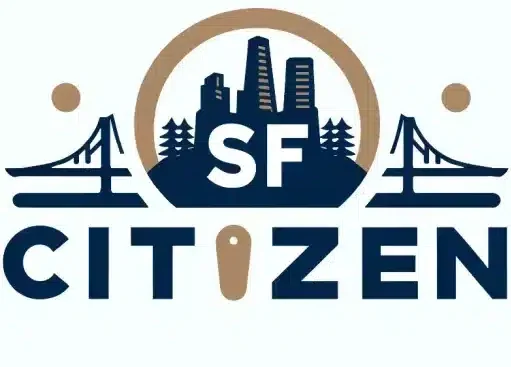San Francisco, a city known for its iconic landmarks and vibrant neighborhoods, has been at the forefront of innovative parking management solutions. In 2011, the San Francisco Municipal Transportation Agency (SFMTA) launched SFpark, a groundbreaking program that introduced demand-responsive pricing to the city’s parking system. This dynamic pricing model has revolutionized the way San Francisco manages its parking resources, leading to improved parking availability, reduced traffic congestion, and enhanced overall mobility.
In This Article
Key Points
- SFpark and SFMTA play a crucial role in implementing demand-responsive pricing in San Francisco
- Real-time parking data influences parking rates adjustment, ensuring optimal parking availability
- Smart pricing strategies have significantly reduced traffic congestion and improved parking management
Understanding Demand-Responsive Pricing
Demand-responsive pricing is a parking management strategy that aims to optimize parking availability by adjusting parking rates based on real-time demand. The primary objective of this approach is to ensure that parking spaces are efficiently utilized, reducing the time drivers spend searching for available spots and minimizing traffic congestion caused by circling vehicles.
The evolution of parking management in urban areas has led to the adoption of demand-responsive pricing as a solution to the challenges posed by limited parking resources and increasing vehicle ownership. San Francisco’s SFpark program has been a pioneer in this field, setting an example for other cities looking to improve their parking management systems.
The Role of Technology in Parking Management
Technology has played a vital role in the successful implementation of demand-responsive pricing in San Francisco. The introduction of credit card meters and real-time parking data systems has enabled the city to collect accurate and timely information on parking occupancy and usage patterns.
The development of mobile applications, such as SpotAngels, has further enhanced the parking experience for drivers. These apps provide real-time parking guidance, helping users find available parking spaces and navigate the city’s parking regulations. By leveraging technology, San Francisco has been able to facilitate parking rates adjustment and improve overall parking availability.
Impact on San Francisco’s Neighborhoods
The implementation of demand-responsive pricing has had a significant impact on various neighborhoods across San Francisco. In areas such as the Mission District, Civic Center, and Fisherman’s Wharf, the program has led to notable changes in parking patterns and availability.
- In the Mission District, demand-responsive pricing has helped to reduce parking congestion and improve turnover rates, making it easier for residents and visitors to find available parking spaces.
- The Civic Center area has seen a more balanced distribution of parking demand, with increased utilization of previously underused parking facilities.
- Fisherman’s Wharf, a popular tourist destination, has benefited from improved parking availability, reducing traffic congestion and enhancing the overall visitor experience.
Other neighborhoods, such as the Embarcadero, Financial District, SoMa, and Mission Bay, have also witnessed positive changes in parking patterns and availability since the implementation of demand-responsive pricing.
Parking Availability and Utilization
Demand-responsive pricing has had a direct impact on parking availability and utilization in San Francisco. By adjusting parking rates based on real-time demand, the city has been able to optimize the use of both metered parking and parking garages.
The program has also addressed the issue of underutilized parking spaces by incentivizing drivers to park in less congested areas through lower parking rates. This has led to a more balanced distribution of parking demand across the city, reducing the pressure on high-demand areas.
Parking citations play a crucial role in enforcing parking policies and ensuring compliance with the demand-responsive pricing system. By effectively managing parking violations, the city has been able to maintain the integrity of the program and ensure its long-term success.
Traffic Reduction and Congestion Management
One of the most significant benefits of demand-responsive pricing in San Francisco has been its impact on traffic reduction and congestion management. By encouraging drivers to park in less congested areas and reducing the time spent searching for available parking spaces, smart pricing has contributed to a notable decrease in traffic congestion.
The Urban Partnership Program, a federal initiative supporting innovative transportation solutions, has played a vital role in supporting San Francisco’s congestion management efforts. Through this program, the city has received funding and resources to implement and expand its demand-responsive pricing system.
Challenges and Opportunities
While the implementation of demand-responsive pricing in San Francisco has been largely successful, the city has faced some challenges along the way. These include:
- Ensuring public acceptance and understanding of the new pricing system
- Addressing concerns about the potential impact on low-income communities
- Integrating demand-responsive pricing with existing transportation infrastructure
Despite these challenges, the future prospects for demand-responsive pricing in urban congestion management are promising. As more cities recognize the benefits of this approach, there is a growing interest in adopting similar programs to tackle parking and traffic-related issues.
San Francisco’s experience with SFpark offers valuable lessons for other cities considering the implementation of demand-responsive pricing. By sharing best practices and lessons learned, San Francisco can help pave the way for more efficient and sustainable parking management solutions in urban areas around the world.
FAQ
What is demand-responsive pricing, and how does it work?
Demand-responsive pricing is a parking management strategy that adjusts parking rates based on real-time demand. It aims to optimize parking availability by encouraging drivers to park in less congested areas through variable pricing.
How has SFpark influenced parking management in San Francisco?
SFpark has revolutionized parking management in San Francisco by introducing demand-responsive pricing. The program has led to improved parking availability, reduced traffic congestion, and enhanced overall mobility in the city.
What role does technology play in demand-responsive pricing?
Technology, such as credit card meters, real-time parking data systems, and mobile apps, plays a crucial role in the implementation and success of demand-responsive pricing. These tools enable accurate data collection, facilitate parking rates adjustment, and provide real-time parking guidance to drivers.
How does demand-responsive pricing affect traffic and congestion?
Demand-responsive pricing helps reduce traffic congestion by encouraging drivers to park in less congested areas and reducing the time spent searching for available parking spaces. This leads to a more balanced distribution of parking demand and improved traffic flow in the city.
What are the future prospects for demand-responsive pricing in urban areas?
As more cities recognize the benefits of demand-responsive pricing, there is a growing interest in adopting similar programs to tackle parking and traffic-related issues. San Francisco’s success with SFpark serves as a model for other urban areas looking to implement more efficient and sustainable parking management solutions.

